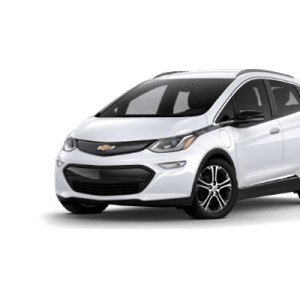How far can you go?
Map out a virtual road trip across B.C. with an electric vehicle.

Overview
Students plan a road trip across B.C. with an electric vehicle, taking into account factors like the varying range of distance between models before needing to be charged, charger locations, how long it takes to charge, and how long the overall trip will take.
Instructions
What you'll need
- “How far can you go” instructions presentation
- Student individual computers or tablets, with access to online resources
- Websites/apps like PlugShare, ChargePoint, BC Hydro Power Smart
- Do the “Think on your feet” activity and/or discuss the pros and cons of various transportation methods like walking, biking, public transportation, gas-powered cars, and electric vehicles.
- Pull up the “How far can you go” instructions presentation. Slides 2-6 provide information on how electric vehicles need charging, the range of distance various models can travel before charging, types of chargers, times to charge and locations of charging stations.
- On slides 7-8 challenge the students to go on a virtual road trip with an electric vehicle.
- Each student chooses or is assigned an electric vehicle. Make sure that students have different cars so there will be different results. Electric vehicles not listed on slide 3 in the presentation can also be used.
- Assign the students point A and point B like Prince George to Kelowna, and using websites and/or apps like PlugShare, ChargePoint, BC Hydro Power Smart that students can plan their road trip.
- Students should plan carefully so they don’t get stranded, considering how far they can go, finding a station, making sure it works for their car, how long it will take to charge and how long the overall trip will take.
- The finished project could be handwritten, digital, art, or verbal and include:
- Listing of the vehicle and its range
- Map with plot points of where charging will happen
- Calculation of how long charging will take at each station (what kind of charging station is it?)
- Calculation of how long the trip will take overall
- Reflection on how all of these details might impact the driver’s decisions. Is this a realistic trip to take with this type of vehicle? Why or why not? What are the benefits? What are the negatives?
Slide 10 challenges the students to find and identify an electric charging station in their community.
Modify or extend this activity
Extension
- Have the students find an electric vehicle charging station in their region, visit it, take a picture to share, and note what kind of charging station it is.
Curriculum Fit
Grade 6, 7, 8 Physical and Health Education
Big ideas
- Healthy choices influence our physical, emotional and mental well-being
Content
- How to participate in different types of physical activities, including individual and dual activities, rhythmic activities, and games
Curricular competencies
Physical literacy
- Develop, refine, and apply fundamental movement skills in a variety of physical activities and environments
Healthy and active living
- Identify factors that influence healthy choices and their potential health effects (Grade 7, 8)
Grade 6, 7 Science
Big idea
- Earth and its climate have changed over geological time (Grade 7)
Content
- Newton’s three laws of motion describe the relationship between force and motion (Grade 6)
Curricular competencies
Questioning and predicting
- Identify questions to answer or problems to solve through scientific inquiry
Grade 6, 8 Social Studies
Big idea
- Complex global problems require international cooperation to make difficult choices for the future (Grade 6)
- Changing ideas about the world created tension between people wanting to adopt new ideas and those wanting to preserve established traditions (Grade 8)
Curricular competencies
- Ask questions, corroborate inferences, and draw conclusions
Assessments
- Assess students’ ability to organize and plan a trip.
- Assess students’ understanding of the challenges of driving long distances with an EV and ways to overcome this.
- Assess students’ creativity in presenting their findings through various mediums.
Teaching Notes
Transportation in B.C.
In Canada, we have unique challenges for transportation as distances are great and communities are often far apart. Subsequently there is a dependency on cars, which up to now have been primarily gas-powered vehicles. However, with carbon targets, and concerns regarding air quality and rising gas prices, electric vehicles are gaining traction.
Electric vehicles have a number of benefits, which include lower operating ‘fuel’ costs, less maintenance and better air quality. However, there are some barriers to owning an EV including access to charging stations and higher upfront costs. The government is now offering rebates for EVs that help alleviate some of these barriers.
BC Hydro’s renewable electricity
BC Hydro uses the power of falling water to create clean, reliable and renewable electricity. With respect to lower emissions and air quality EVs make sense but particularly in B.C., since the majority of our electricity is renewable. See here for an analysis of the costs of electric vehicles.
BC Hydro is supporting electric vehicle adoption in B.C. by working with local, provincial and federal governments on initiatives to expand its fast charging station network. There are currently more than 1,000 charging stations (including over 70 fast charging stations as of February 2020), with additional stations being added yearly.







